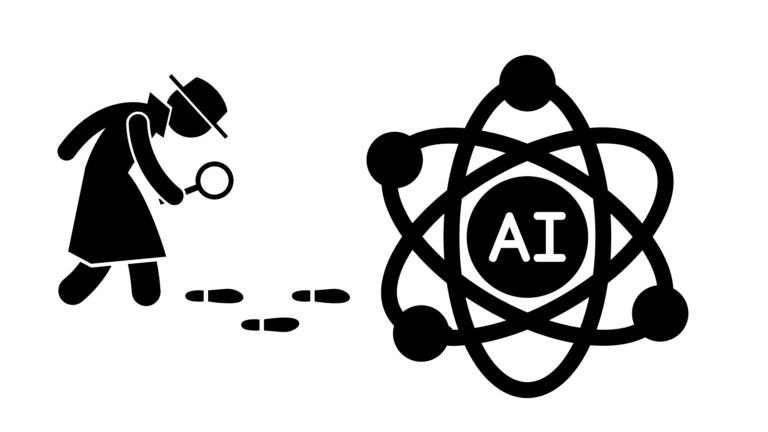A Guide to ChatGPT Detection
With the increase in the use of AI-generated content, it has become important to distinguish between content created by humans and those created by machines. In this article, we will explore the different tools and techniques available to detect AI-generated content.

Why is detecting AI-generated content important?
AI-generated content is becoming more prevalent, with many individuals and organizations using AI-powered writing tools to generate content quickly and efficiently. However, it is important to ensure that the content being produced is of high quality and not misleading. It is also important to distinguish between content created by humans and those created by machines.
Detecting AI-generated content is important for several reasons.
- Firstly, it ensures that the content being produced is of high quality and not misleading.
- Secondly, it helps to maintain the credibility of the content and the author.
- Lastly, it helps to protect against plagiarism and copyright infringement.
AI Content Detection Tools
Writer AI Content Detector
The Writer AI Content Detector is a free tool developed by Writer.com that helps users detect AI-written content generated by an AI writing tool, such as GPT-3 or GPT-4. The web-based tool provides a detection score, indicating the likelihood that the content was created by an AI. The tool uses a combination of machine learning algorithms and natural language processing (NLP) to detect AI-generated content.
GPT-2 Output Detector
The GPT-2 Output Detector is another tool built by OpenAI to detect AI-generated content. Although it was designed for the older GPT-2 bot that was released in 2019, it is still effective in detecting AI-generated content. The tool uses a machine learning model to detect whether the content was generated by a machine or a human.
Jasper
Jasper is an AI chatbot that uses natural language processing to generate human-like responses. It is primarily used for customer service, but it can also be used to detect AI-generated content. Jasper uses a combination of machine learning algorithms and NLP to detect whether the content was generated by a machine or a human.
GPTZero
GPTZero is a web app and service designed to detect whether a body of text has been written by a human or by an artificial intelligence.

What is ChatGPT Detection?
ChatGPT detection is the process of identifying whether a chatbot or virtual assistant is generating responses. Chatbots like ChatGPT use machine learning algorithms to analyze text input and generate human-like responses. While these responses can be useful for providing quick and personalized responses to user queries, they can also create challenges for SEO.
When search engines crawl websites, they analyze the content to determine its relevance and usefulness to users. Chatbots can generate large volumes of content that may not be relevant or useful to users. This can result in lower search engine rankings and decreased traffic to the website.

The Differences Between Humans and Chatbots
- The first step in detecting a chatbot is understanding the differences between humans and chatbots. Humans can understand emotions, empathize, and improvise.
- Chatbots, on the other hand, follow rules and algorithms. They lack emotions and consciousness.
- Humans use diverse language and can convey emotions
- Chatbots use a limited set of pre-programmed responses.
- Chatbots cannot handle ambiguity or deviation from their programmed responses.
How to Mitigate the Negative Impact of ChatGPT on SEO
There are several strategies that website owners can use to mitigate the negative impact of chatbots on SEO. These include:
Limiting the use of chatbots: Website owners can limit the use of chatbots to specific pages or sections of their website. This can help prevent the generation of large volumes of irrelevant content.
Using noindex tags: Website owners can use noindex tags to prevent search engines from indexing pages generated by chatbots. This can help prevent duplicate content issues and penalties from search engines.
Monitoring chatbot activity: Website owners can monitor chatbot activity to ensure that the content generated is relevant and useful to users. This can help prevent the generation of large volumes of irrelevant content.
Implementing content moderation: Website owners can implement content moderation to review and approve content generated by chatbots before it is published. This can help ensure that the content generated is relevant and useful to users.
Chatbot Detection Techniques
Now let’s get into the ways to detect chatbots. There are a few techniques you can use to determine if you’re chatting with a human or a machine.
- Response Time
Chatbots respond instantly and accurately. They don’t need time to think before answering. If you receive a response that’s quick and precise, it’s likely from a chatbot. - Language and Tone
Chatbots use a limited set of responses and often have a monotone voice. They cannot convey emotions or use sarcasm. If the language and tone are robotic, it’s likely a chatbot. - Errors and Repetition
Chatbots can’t handle ambiguity or deviation from their programming. If they encounter a message they don’t understand, they may repeat the same response or give an error message. - Open-Ended Questions
Chatbots have a limited ability to understand and respond to open-ended questions. If you ask an open-ended question, and the response seems robotic or off-topic, it’s likely a chatbot. - Testing Knowledge
Chatbots have a limited knowledge base. If you ask a question that’s outside their programmed knowledge base, they may provide an incorrect or irrelevant answer.
In conclusion, chatbots are becoming increasingly common in online communication. It’s essential to be able to distinguish between a chatbot and a human to prevent misunderstandings. Use techniques like response time, language and tone, errors and repetition, open-ended questions, and testing knowledge to detect chatbots easily.
Remember that chatbots have their advantages and limitations. While they can be helpful, they lack the emotional intelligence and creativity of humans. Use chatbots where appropriate but prioritize human interaction where needed.
FAQs
Are chatbots becoming more advanced?
Yes, chatbots are becoming more advanced as technology improves.
Can chatbots convey emotions?
No, chatbots cannot convey emotions, but they can simulate them.
How accurate are chatbots in understanding natural language?
The accuracy of chatbots in understanding natural language depends on their programming and training data.
What industries are using chatbots the most?
Industries such as customer service, e-commerce, and healthcare are using chatbots the most.
Can chatbots learn from humans?
Yes, chatbots can learn from humans through machine learning algorithms.







